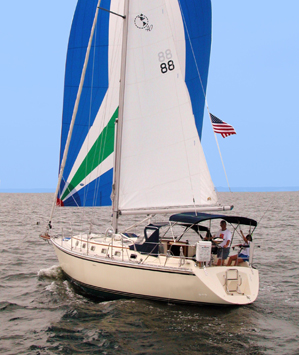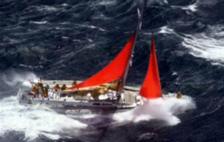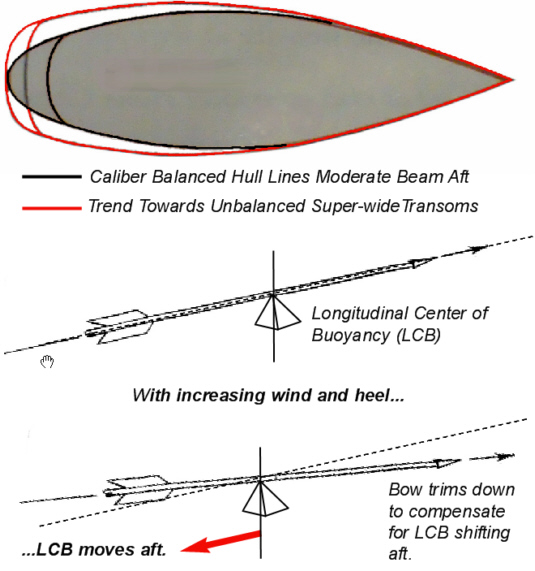|
 |
The moderate transom width on
a Caliber assures a stable course even when the winds and seas build up. The
Caliber hull will tend to gently heel while maintaining a level trim. In
other words, the bow does not automatically lower as the wind and heel
increase. It is difficult to broach a balanced hull design. |
|
From “Seaworthy
Offshore Sailboat” by John Vigor |
“Imagine a
boat shaped like an old-fashioned flat iron-- almost triangular in shape,
pointed in front and wide at the back. Now think what happens when that boat
heels under sail. The bow end sinks slightly because it has little buoyancy;
the stern end rises much more because it has excess buoyancy.
Now that the stern has less grip on the water than the bow has, the stern
tends to be blown downwind through the water and the boat weathercocks into
the wind, pivoting from the bow. This is called griping [broaching].” |
|
From “Rough
Weather Seamanship” by Roger Marshall |
|
“The stern
shape is critical to the boat’s behavior. A boat with a large, fat stern and
fine bow will tend to sail bow-down as it heels, which can cause the rudder
to lift out of the water slightly and become less efficient. The boat may
also be more prone to broaching in heavy weather [...]” |
|
From “Modern
Cruising Under Sail” by Don Dodds |
|
“If the
stern gets too wide it can create turbulence; it also adds wetted surface
when hard on the wind at larger angles of heel. As I discussed earlier,
stability problems have been blamed on excessive width in the stern.” |
|
From “Seaworthy
Offshore Sailboat” by John Vigor |
|
“Designers
of oceangoing cruisers try to balance the ends of a boat by keeping the
submerged areas fore and aft roughly equal at all stages of heel. This
results in a boat that is easily balanced by varying the areas of sail fore
and aft of the mast. Such a boat obeys the helm easily and quickly in all
conditions without excessive strain on the rudder. It is a great safety
feature” |


